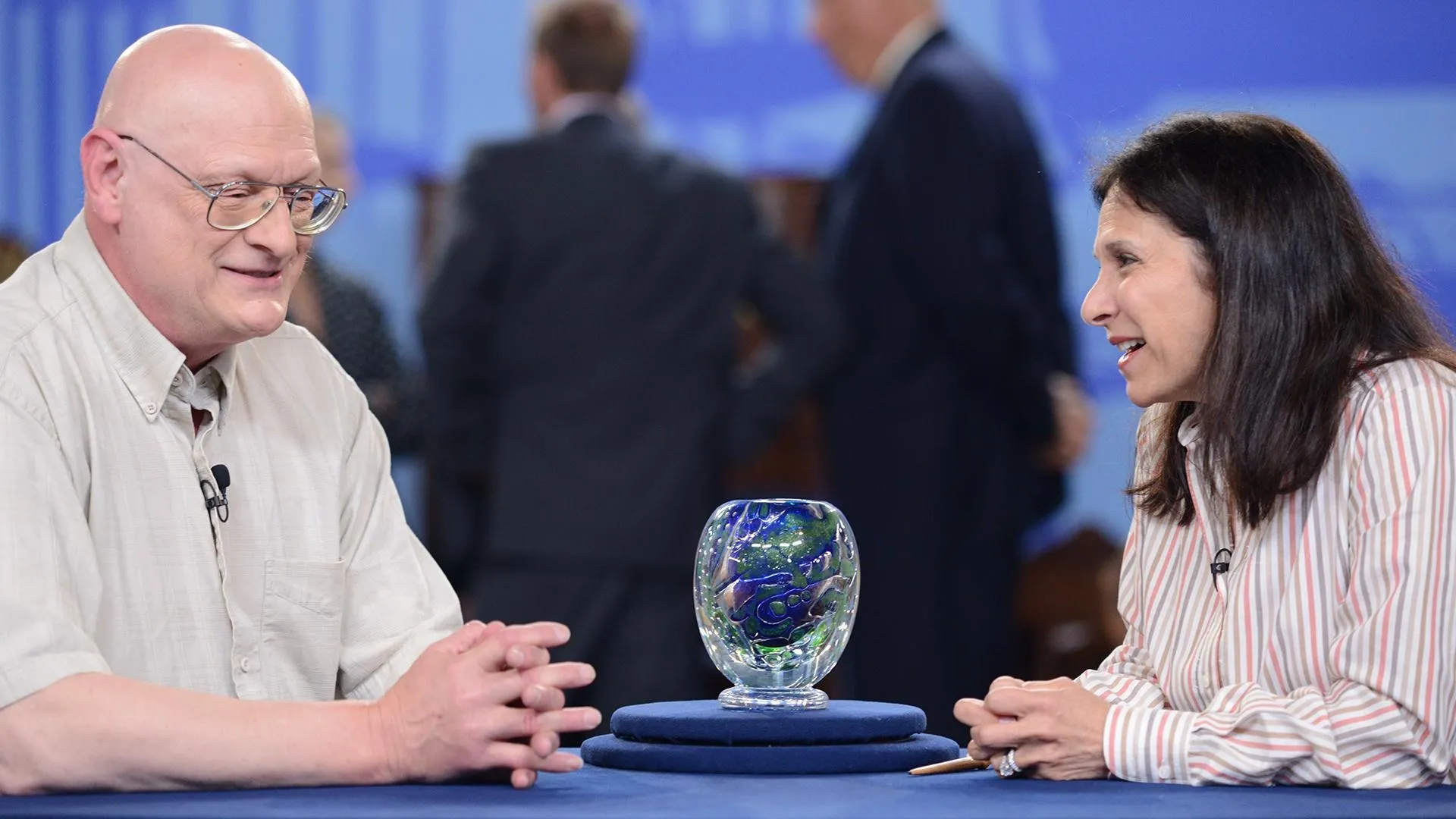GUEST: This is a chair that I purchased in the early '70s. I was out antiquing with a friend of mine in the White Bear Lake area of Minnesota, and we came upon a consignment antique store. And there were two of these chairs, and they drew our attention right away. My friend bought one and I bought one. At the time we purchased them, we said, "You're never to sell that chair unless you talk to each other first." This chair's been very special to me throughout the years. It's very comfortable, I've enjoyed it, my children have enjoyed it, and I'm curious about it. I'd like to know more about it.
APPRAISER: I'll bet you we can help you out with that. This chair is by Charles Eames, probably one of the most iconic American furniture designers of all times. Especially he's iconic if you look at World War II and afterwards. During World War II, Charles Eames worked for the military. He made all kinds of things. He made leg splints, he did all kinds of things with wood, bending it, moving it, kind of getting wood to do things it naturally doesn't want to do. And when you look at this chair, you can see that influence. He designed this chair in 1946. This is a really early Charles Eames design.
GUEST: Wow!
APPRAISER: This is called an LCW: a lounge chair wood. He made a DCW, which means a dining chair wood, a DCM, which is a dining chair with metal legs. He made an LCM, a lounge chair with metal legs. But you have the best of all of them. So not only do you have an LCW, which is generally the most valuable, the most interesting, but you have the rarest of all of them, by far you do.
GUEST: Oh!
APPRAISER: And what's great about this chair is that you have the slunk skin finish on it, which is really rare. A slunk is basically an unborn cow-- I don't want to get too gory-- so this is the skin of an unborn calf, and he applied them to your chair. Now, there are a couple instances where Charles Eames furniture can be difficult. One is replacing this sort of thing. My advice, slunk skin is easy enough to get, but it can be very difficult to put on, and once you apply slunk skin to the chair frame, you've devalued this chair.
GUEST: Okay.
APPRAISER: Which is sort of unusual for modern, because modern tends to be very forgiving as far as fixing things or replacing things. You have a wonderful label underneath.
GUEST: Yes.
APPRAISER: Right there is a "Herman Miller/ Charles Eames" label in silver and red. This piece I believe was probably made in the mid-'50s, would be my guess by the label. It's definitely a little bit later label. This chair also helped to kind of move Charles Eames into his relationship with Herman Miller, which was a big deal, and he worked for Herman Miller for most of his career-- made thousands of great pieces of furniture-- and really changed the way America looks today. This chair was a real pioneer in American modernism. What did you pay for it?
GUEST: Either $25 or $50.
APPRAISER: So you paid $25 or $50 for this chair. Today at auction, this chair is probably worth $2,500 to $3,500.
GUEST: Wow!
APPRAISER: And if the slunk skin was in better condition, it'd probably be worth $6,000, $7,000, $8,000.
GUEST: Wow!












